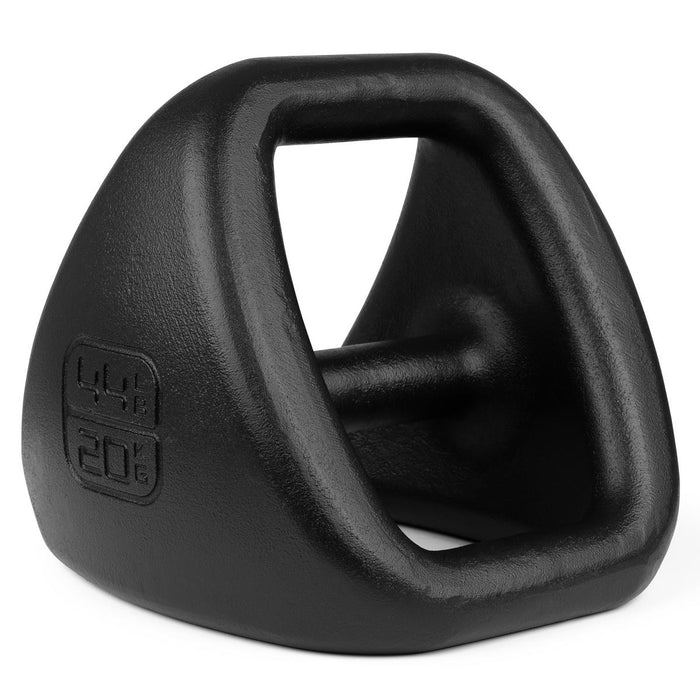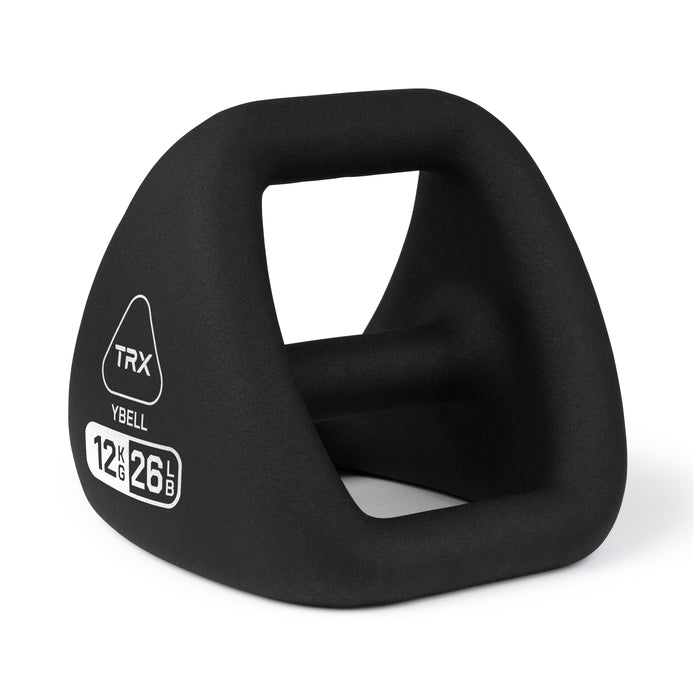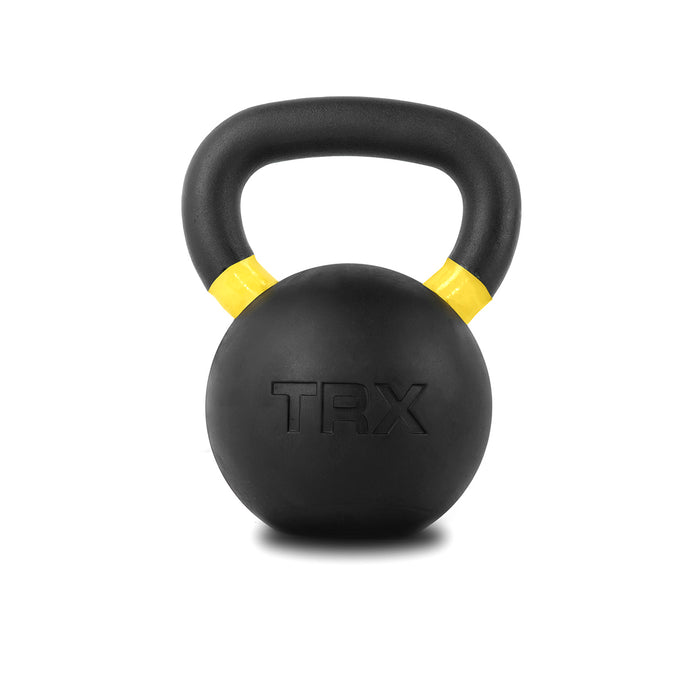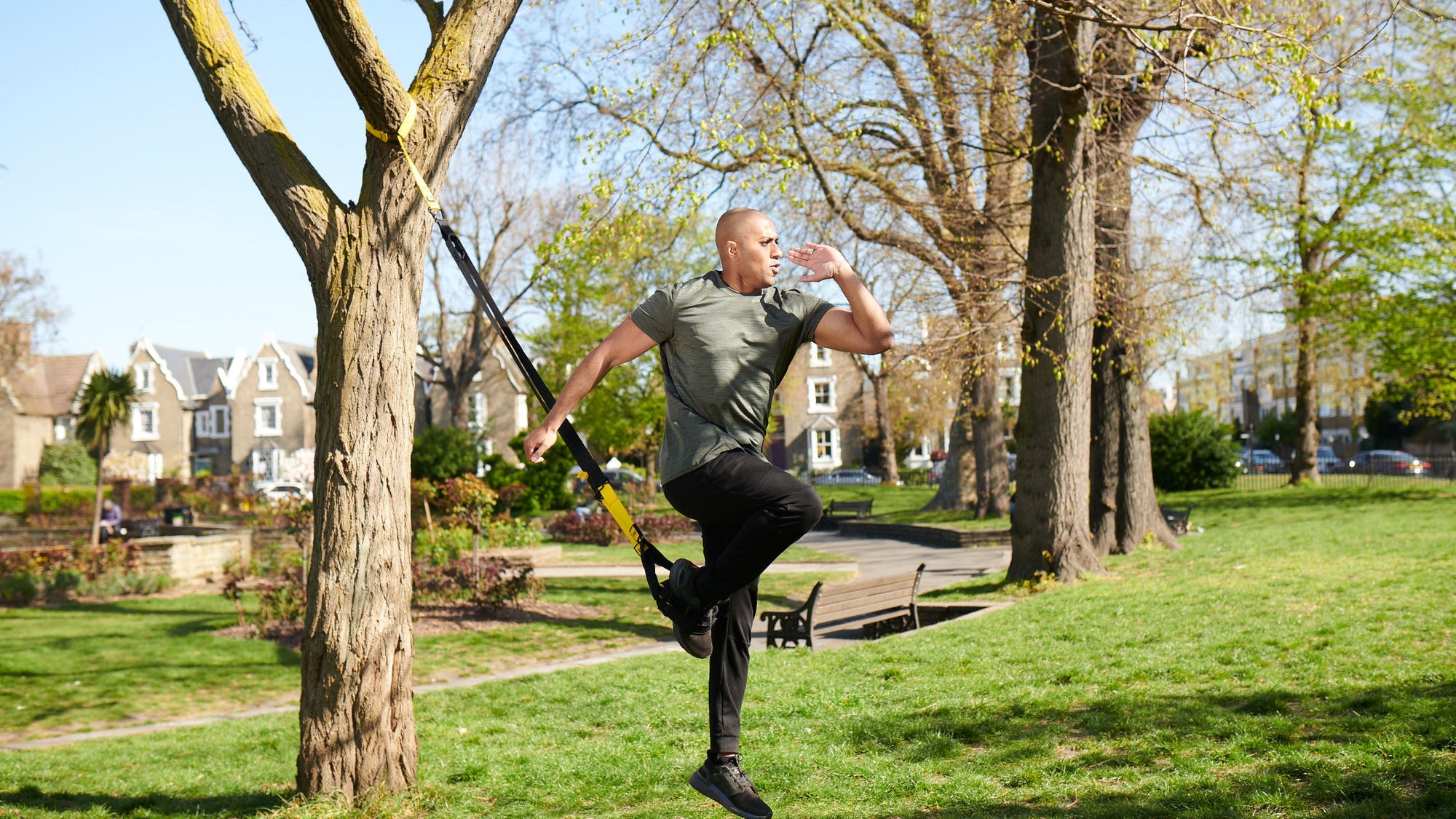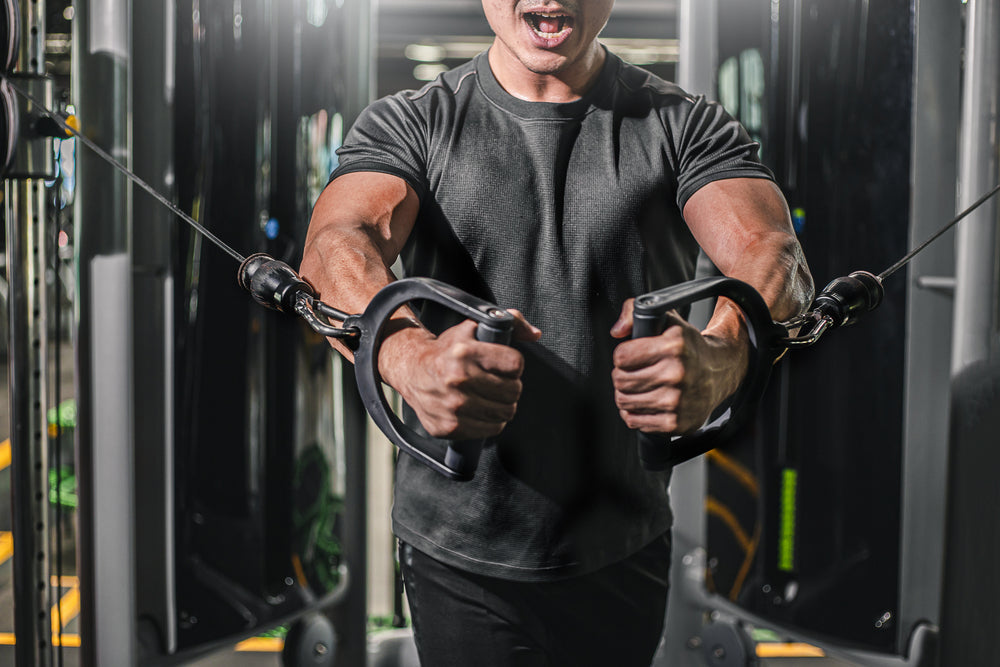Weights and abs are a lethal combo, especially when doing a variety of movements. In this article, we're going to be covering some of the best weighted ab exercises you can build to develop a stronger core. Let's get started!
Why Add Weights to Your Ab Exercises?
Bodyweight ab exercises are certainly effective, but when you’ve advanced to a stronger core, adding weights to your ab exercises can not only keep things interesting, but also help build core muscles faster while getting you closer to the defined abs that you want.
Today, we’ll share with you ten of the best weighted ab exercises that you can incorporate into your workout split. Before we go over the exercises, we’ll go over what weights you’ll need and afterwards, we’ll share a sample workout that will engage your core and stabilize your spine. Let’s get started!
What are the Best Ab Exercises Using Weights?
When putting together a group of ab exercises for your workout, you want to choose movements that target not just the rectus abdominis (i.e. 6 pack) muscles that pull you forward, but also exercises that target the internal and external obliques.
The main reason is these types of exercises help you produce and control torso rotation while also improving overall balance. Since each of these muscles are responsible for different movements, you want a wide variety of exercises that challenge you in different directions, both producing movement, and resisting it. Adding extra weight will increase the challenge in each exercise, getting you to your strength and/or aesthetic goals faster.
What You’ll Need
You can use dumbbells for most of these moves, but if you've got medicine balls or kettlebells, they may work better for some specific movements. Not sure which weight is right for you? Take our quick fitness assessment quiz to get personalized recommendations based on your experience level. If you're just starting out, grab lighter sizes (5-10lbs). If you're more advanced you'll be able to use 12lbs or more, depending on your level of fitness and comfort with the exercise.
A safe practice is always to begin with bodyweight ab exercises. Then, as you’re able to complete the reps with ease, begin to add light weights and move up the scale as your progress.
10. Turkish Get-Ups (Sit-Up Portion)
Using Kettlebells can add load/power elements to your training and using them for Turkish Get-Ups is a great way to target every core muscle around your spine and shoulders. While the full Get-Up is very effective, it’s also extensive and takes some practice. Doing only the sit-up portion here will be sufficient. Here’s how to do this kettlebell ab exercise:
How to Do Turkish Get-Ups
- Keeping the weight directly over your shoulder (imagine you were balancing a tray of drinks overhead), roll over to your side and up to your elbow.
- Press up to your hand keeping your eyes on the weight, and the weight over your shoulder.
- Lower back down to your elbow and then down to your back, keeping the weight stable.
- Repeat on the other side.
Beginner Tip: Start this one with a very light weight (or even balancing a shoe on your knuckles) to ensure your overhead shoulder mobility is good enough to keep your arm up!
9. Wood Chop
Your torso doesn’t just flex forward and backward. You also need to use your obliques to move left and ride as well as up and down. Adding in a rotation movement (or resisting rotation) is a great way to target the oblique muscles!
How to Do the Wood Chop:
- Stand in a staggered stance holding the dumbbell sideways, or holding the ball in both hands.
- Hinge forward with a flat back and slightly bending the knees, taking the hands toward the leg in the back.
- Stand up and swing the arms overhead and to the opposite side of the body.
- Keep a flat back and arms almost straight as you hinge back down for the next rep.
- The back foot can stay in place or step forward as you swing upward.
- Repeat on the other side.
Advanced Tip: Increase your speed and use a heavier weight as you progress with this exercise. Continued resistance will ensure that you’re always building your core.
8. Weighted Single Side Dead Bug
Spine stability exercises like this one are great because they challenge many muscle groups at once while keeping the spine safely in a neutral position.
How to do the Weighted Single Side Dead Bug:
- Lying on your back with your knees bent at 90 degrees over your hips and your arms straight up to the ceiling, hold a weight in one hand.
- Drop the weighted arm straight back behind your head and simultaneously straighten the opposite knee, keeping the spine and torso as still as possible.
- Bring the arm and the leg back into the starting position at the same time.
- Repeat the desired amount of reps and then switch the weight to the other hand to complete the opposite side.
7. Renegade Row
This move is great for plank perturbation and working all the core muscles together. Plank perturbation is the act of “messing with” the plank and it helps you challenge your abs from different angles. This could be through adding movement from the arms or legs while still keeping the spine and hips still, neutral, and level. It’s a great way to level up your plank!
Start this one from a knee plank with wide legs to make sure you can stabilize the hips and torso before moving up to a full plank and heavier weight.
How to Do a Renegade Row:
- Find a plank position on your hands and place a dumbbell or kettlebell under your torso.
- Grab the weight with your right hand and perform a row, pulling your elbow up toward the ceiling and keeping it close to your side.
- Place the weight down under you and repeat with the opposite arm.
Pro Tip: Resisting torso and hip rotation makes this tough but keeps the spine in a safer neutral position.
6. V Sit with Weight Pass
V Sits with weight passes challenges your lower abs and hip flexors to hold the V shape. The exercise also challenges your obliques as you pass the weight back and forth. This moves around your center of gravity. It’s harder than it looks!
How to do a Vit Sit with Weight Pass
- Sit with a tall spine, slightly leaving back with the feet on the floor (for beginners) or off (for advanced). Hold a single light dumbbell in one hand in front of your ribs.
- Extend that hand out to the side while keeping the torso and legs as still as possible.
- Bring the weight in and switch hands.
Pro Tip: Heavier weight will increase challenge your core, but it will also challenge your shoulders. Pick a weight you could do a deltoid raise with.
5. Weighted Sit Ups
Class sit-ups are great for targeting your six-pack section of abs and your hip flexors. You should be able to do a full sit-up slowly, with control before adding extra weight to it! If you have to use momentum to get up, don’t use weight and shorten your range of motion. If you have spine or disc issues, we recommend trying a different exercise instead.
How to Do Weighted Sit Ups:
- Sitting up, hold the weight close to your body and slowly lower your torso to the ground.
- Stop in a crunch position and then sit back up to the starting position, keeping the weight close to your body.
Coach’s Tip: If you have to reach the weight forward to get up, drop to a lighter weight.
4. Overhead Reach with Leg Lower
Stabilizing the spine while moving the limbs is a great way to drive an isometric contraction (where the muscles work, but they don’t move) and help strengthen and tone the area.
How to Do an Overhead Reach with Leg Lower
- Holding a dumbbell or a medicine ball overhead, pull one leg up in the air.
- Lower the arms back overhead while lowering the leg almost to the floor and keeping the spine and torso still and stable. Pull the limbs back up to the starting position at the same pace and repeat with as little movement in the torso as possible.
- Repeat on the other leg.
Beginner Tip: Lower the leg just a little bit to start to make sure you don’t feel this in your low back. Increase the range of motion as you feel comfortable.
Advanced Tip: Do both legs at the same time and add a crunch at the top of the move.
3. Leg Drops
Leg drops are one of the best Swiss Army Knife exercises for developing a lean and balanced core. The movement stabilizes the torso and works your ower abs, hip flexors, and even the quads!
How to Do Leg Drops
- Lie on your back with your legs up in the air, gripping a light dumbbell between your feet, or light medicine ball between your knees.
- Beginners: Bend knees at 90 degrees
- Advanced: Straighten legs as much as possible
- Lower your legs slowly toward the ground keeping your torso and upper body as still as possible. Your spine should not arch or round.
- Raise the legs back to the starting position.
- BREATHE.
Pro Tip: Bigger range of motion makes this harder, so start with small movements and work your way up!
2. Single Leg Deadlift Dumbbell Pass + Knee Drive Pass Under
Moving the torso and moving a weight around while standing on one leg is the ultimate stability exercise! You’ll not only work your core, but all the muscles around the hips, knees, and ankles. Every weight shift will shift your center of gravity, so start slow to make sure you’re ready!
How to Do Single Leg Deadlift Dumbbell Pass + Knee Drive Pass Under
- Standing on one leg, hinge forward into a Romanian Deadlift.
- At the bottom of the hinge, pass the dumbbell or kettlebell to the other hand and then back.
- Stand up, lifting the knee, and then pass the weight back and forth again under the knee. That’s one rep. Repeat for the desired amount of reps.
- Repeat on the other side.
Pro Tip: The heavier the weight, the bigger the pass, the harder it is to balance. Start lighter and smaller and then progress up!
1. Plank with Dumbbell Pass
This plank perturbation exercise challenges every muscle in the core, as well as the hips and lower body too!
How to Do a Plank with Dumbbell Pass
- Start in a plank position with a dumbbell under your torso on one side of the mat.
- Reach over with the opposite hand to pull the weight toward that side of the mat and set it down.
- Repeat with the other arm, moving the weight from one side to the other. Your weight will shift back and forth, but try to keep the body’s movement to a minimum.
Pro Tip: Wider feet will give you better balance and stability. As you progress, move your feet closer together.
Do your next workout with our TRX equipment:
Try This 10-Minute Weighted Abs Workout
If you’ve only got 10 minutes, try the workout below to hit every muscle in your core! Doing timed sets allows you to focus on your form rather than rep numbers. Set a timer to go off every 30 seconds, or simply watch the second hand on a clock. Having 3 weight sizes (1 light, medium, and heavy) right next to you is optimal so you can switch out easily.
There should be no joint pain in any of these moves so take your time and pay attention to how each of these feel. Add more range of motion, more reps and/or more weight as you progress!
Remember: not only do these exercises help strengthen and define your core muscles, they also help stabilize the spine from every direction, which can help ward off back pain. Better core strength also translates to better performance in recreational activities and sports.
Study #1: Core Stability Training for Injury Prevention
Study #2: Effects of Core Training on Endurance & Running
|
First 30 Seconds |
Second Thirty Seconds |
Weight |
|
|
Minute 1 |
Single Leg Deadlift w/ Pass Etc. Alternating Legs |
Medium to Heavy Dumbbell or Kettlebell |
|
|
Minute 2 |
Wood Chop Right |
Wood Chop Left |
Medium Dumbbell or Medicine Ball |
|
Minute 3 |
Renegade Rows, Alternating Arms |
Rest, if needed. If no rest needed, keep going. |
Medium to Heavy Dumbbell or Kettlebell |
|
Minute 4 |
V Sit with Pass |
Light Dumbbell |
|
|
Minute 5 |
Turkish Get Up Right |
Turkish Get Up Left |
Light to Medium Kettlebell |
|
Minute 6 |
Weighted Sit Ups |
Rest, if needed. If no rest needed, keep going. |
Light Dumbbell |
|
Minute 7 |
Weighted Dead Bug Right |
Weighted Dead Bug L |
Light to Medium Dumbbell |
|
Minute 8 |
Overhead Reach w/ Leg Lower Right |
Overhead Reach w/ Leg Lower Left |
Medium Dumbbell or Medicine Ball |
|
Minute 9 |
Plank with Dumbbell Pass |
Rest, if needed. If no rest needed, keep going. |
Medium to Heavy Dumbbell or Kettlebell |
|
Minute 10 |
Leg Drops |
Rest, if needed. If no rest needed, keep going. |
Light Dumbbell or Medicine Ball |
P.S. try other workouts like the one above in the TRX Training Club app!
Whether you’re doing this workout, or any others TRX has to offer, make sure to move smart: start slowly, earn the right to progress to the next level by acing the beginner levels first, and listen to your body. It’ll tell you when to back off and when to move ahead. Enjoy!
Huxel Bliven, K. C., & Anderson, B. E. (2013, November). Core stability training for injury prevention. Sports health. https://www.ncbi.nlm.nih.gov/pmc/articles/PMC3806175/
Hung, K.-C., Chung, H.-W., Yu, C. C.-W., Lai, H.-C., & Sun, F.-H. (n.d.). Effects of 8-week core training on core endurance and running economy. PLOS ONE. https://journals.plos.org/plosone/article?id=10.1371%2Fjournal.pone.0213158


